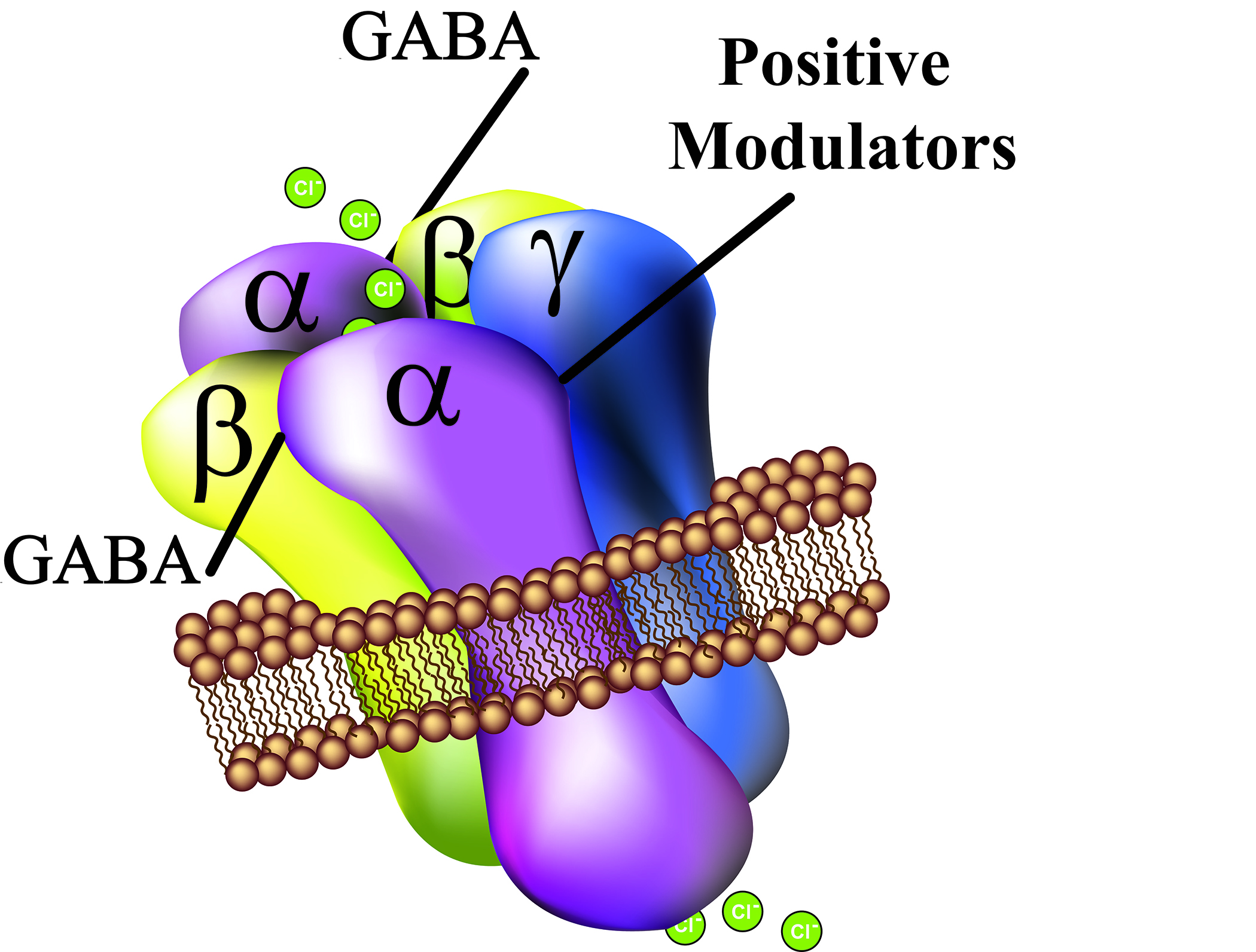GABA(A) Receptor
The GABAA receptor (GABAAR) is a ligand-gated chloride ion channel best known for its role in central nervous system (CNS) inhibitory neurotransmission (Figure 1).

Figure 1. GABAA receptor
GABAARs are heteropentameric membrane receptors comprising 19 different subunits (α1–6, β1–3, γ1–3, δ, ε, π, θ, ρ1-3). Classical GABAARs consist of 2 alpha, 2 beta, and one “tertiary” subunit (γ, δ, ε, θ, or π) (Olsen et al 2008). The principal endogenous ligand for GABAARs is γ-aminobutyric acid (GABA), however, many allosteric ligands have been identified, among them the class of benzodiazepines. These small molecules bind between the α and tertiary GABAAR subunit. Discrete expression of these GABAAR subunits on cells involved in asthma enables tissue-selective pharmacological effects. For instance, among the six α GABAAR subunits, human airway smooth muscle (ASM) express only the α4 and α5 isotypes (Mizuta et al 2008). Expression of α3 and α4 GABAAR subunits have been shown in mouse T lymphocytes (Yocum et al 2017). Activation of specific GABAAR subtypes in airway smooth muscle cells has been demonstrated using α4 selective ligands (Forkuo et al 2016) (Forkuo et al 2017) (Jahan et al 2017) (Gallos et al 2012) (Yocum et al 2016) and α5 selective ligands.(Gallos et al 2015) (Forkuo et al 2017) (Forkuo et al 2018).